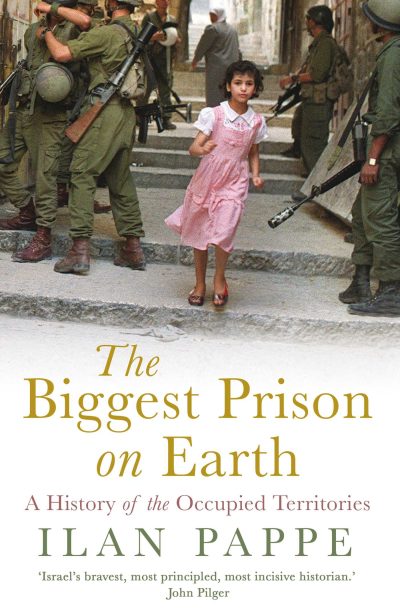The Biggest Prison on Earth. The Land of Historic Palestine
Book Review

All Global Research articles can be read in 51 languages by activating the “Translate Website” drop down menu on the top banner of our home page (Desktop version).
To receive Global Research’s Daily Newsletter (selected articles), click here.
Follow us on Instagram and Twitter and subscribe to our Telegram Channel. Feel free to repost and share widely Global Research articles.
***
“The Biggest prison on earth was not created in June 1967 with the aim of maintaining the occupation, but rather it was a “practical response to the basic requirements of the Zionist ideology,” which is to control as much of the land of historic Palestine as possible, and try to create an absolute Jewish majority, if that Possibly, in Palestine”- Ilan Pappé
***
In his book “The biggest Prison on Earth”, Israeli historian Ilan Pappe presents a historical account that undermines the Israeli narrative that Israel fought a defensive war to pre-empt a full-fledged Arab offensive in 1967.
Adds Pappe, in the summer of 1963 — A group of extraordinary Israeli students enrolled in a one-month course at the University Campus (Givat Ram) and they were almost all of them with a legal background. The political science department of the Hebrew University took over the invitation of this group. The course included lectures on military rule in general and the political situation in the West Bank and Gaza Strip, and the curriculum also included a short introduction to Islam. It is noteworthy that the Israeli army had prepared four years before its occupation of the West Bank, to establish a judicial and administrative infrastructure to control the lives of one million Palestinians.
The “Shackham” plan, which was later merged with the “Granite” plan, was the most organized and detailed plan among all the Israeli preparations that preceded 1967 regarding how to occupy the West Bank and Gaza Strip.
Ilan Pappe talks about the support of the extremist nationalist and aggressive Israeli press, which was supporting these generals and politicians. This idea was deeply rooted in the curricula and educational texts of the Israeli educational system. This plan was even in children’s games that included maps of Israel extending over the entire area of the West Bank and assumed that it would fall into the grip of the occupation.
Which brings us back to what Chomsky said. Politicians, academics, generals, and government officials agreed in 1967 to turn the West Bank and Gaza Strip into a huge prison, the largest ever on earth.
Ilan Pappé is an Israeli historian who belongs to the current of new historians who have rewritten Israeli history and the history of Zionism.
*
Note to readers: Please click the share buttons above or below. Follow us on Instagram and Twitter and subscribe to our Telegram Channel. Feel free to repost and share widely Global Research articles.
Our thanks to Antonio Tujan for bringing this to our attention.
Featured image is from Simon & Schuster

